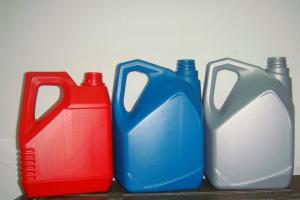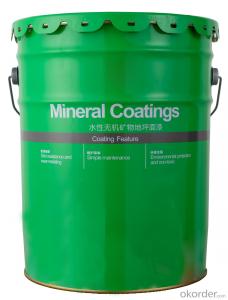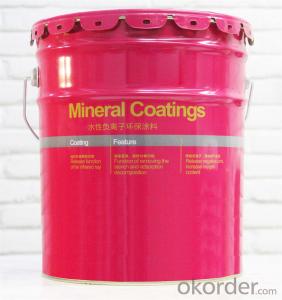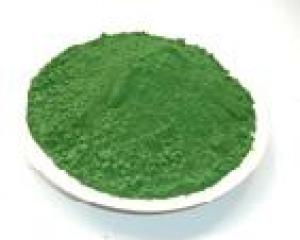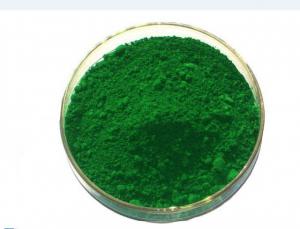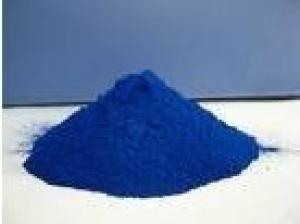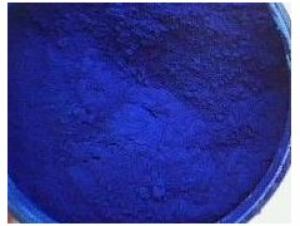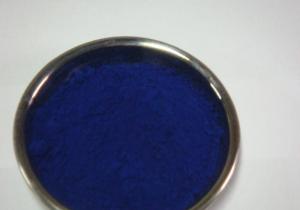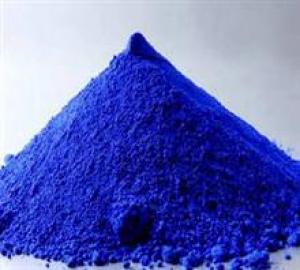Special-purpose color Masterbatch PPR Pipe color Masterbatch
- Loading Port:
- China main port
- Payment Terms:
- TT OR LC
- Min Order Qty:
- 25 kg
- Supply Capability:
- 1000000 kg/month
- Option:
- Granule count/gram
OKorder Service Pledge
OKorder Financial Service
You Might Also Like
Item specifice
Application & Features
This series of products use PP as the substrate. lt has characteristics such as Easy coloring,Non-toxic,Tasteless,weathering strong,No leakage and migration.There will be No bubble and pocking mark while producing,meanwhile,it enhance pipes stiffness and toughness.
Technical Specification
General Information | ||
Product Name | : | Special-purpose color Masterbatch |
Physical and Chemical Specification | ||
Packaging | : | Unit Kraft bag |
Carrier Resin | : | PE |
Melting Temperature | : | > 100° C |
Appearance | : | Uniform granule |
Light Fastness | : | 5(ISO Blue Wool Scale) |
Heat Stability | : | 240 ° C |
Application | : | Injection & Extruding moulding , |
Letdown Rate | : | 2 % ~ 4% |
Color difference | : | ΔE<0.3 0.3 |
MFI(ASTM D-1238,190°C,2.16kg) () | : | 21± 5 grams/ 10 minutes |
Moisture(ASTM-4019) | : | 0.5 % |
Granule count/gram | : | 30-50 |
Granule length (L) | : | 2.5 – 3.5 mm |
Granule diameter (D) | : | 2 – 3 mm |
- Q:whats it for? lol
- itz for ur beautifing ur skin.
- Q:I'm onto black-berry.. I wonder what else is available in 98362.
- Pigments from the past came from rocks, minerals, plants, and other natural materials. Those things are all still available. You can take classes at some universities that teach how to make your own paints, or dry pigments. For native American pigments, you have to research which tribe used which colors. To be totally authentic you could visit the tribe of your choice and see if you can learn from them. Sticking to your own zip code will not net you much, usually.
- Q:(Explain what happens when a pigment molecule is struck by electromagnetic radiation in the visible light spectrum.)
- pigments are molecules that absorb electromagnetic radiation. For example, the chlorophyll pigment in plants absorbs blue and red light, which is why they reflect green light (since green is the color not absorbed). Another example is melanin, which is the pigment that darkens the skin of people. Melanin absorbs UV to protect the skin. A pigment molecule struck by EM radiation in the visible region may absorb some of the light depending on what pigment it is.
- Q:I am planning on purchasing MAC, but what r the differences... thanks to all...I want to have an idea before I head to the mall.
- Pigment is the purest formula or color with minimal ingredients mixed in to buffer or thin out the product. Generally, the loose form is the most intense because it is lightweight and you can pack it on, mix with a medium, or layer. Pigments usually cost more than pressed forms. However, there are some pressed pigment shadows that are awesome (NARS, Make up for Ever, Urban Decay)! MAC has excellent shadows, I use a lot of them (loose pressed) in my kit. Loose pigments are great mixed with water or mixing medium to intensify. They also will last you forever!
- Q:My wife went to the eye doctor to get new glasses (because she couldn't renew her driver's license with her glasses she had been using), and the doctor said that she wasquot;losing pigment&quot; in both of her eyes. He said not to worry, but he wants her to make an appointment every 6 months, instead of just once a year.What does it (her losing pigment in her eyes) mean? Is it really nothing to worry about?(My wife doesn't seem worried, she hates going to doctor's but she trusts them when she goes to them; she doesn't ask questions-- she feels that if she needed to know something the doctor would tell her.)
- My okorder .
- Q:So i'm writing up a lab report and i'm just a little confused on why scarlet, rosy, cinnabar and vermillion mutants contain the same kinds and amounts of pigments found in wild-type according to paper chromatography. Since they're mutants shouldn't it be different? I don't understand how i'm going to explain that they are mutants when it appears that they have the same phenotype as wild-type. Thank you so much for your help!
- Man pigments determine the colour of the eye. If the composition of pigments is same in all the flies,how can the colour in which their eyes look differ?isn't this a contradiction?i suspect the accuracy of The chromatography test because even a very very slight change in the amount of pigment can significantly change the colour. The phenotype is always different in mutants due to different genotype. in genotype is taken for granted if a change in phenotype is present. Wait just got over into a nice point. Sometimes even if the pigment composition being same different colours m8 be produced due to different allotropes or iro of the same pigment might have different colours!though allotropes(not isomers) have same composition but differ in,their post translational changes r different.since post translational changes r indirectly influenced by genes.this completely explains this case.
- Q:Explain why plants need a variety of pigments to carry out photosynthesis?
- In photosynthesis plants make their which is a carbohydrate i.e. a compound of carbon, hydrogen and oxygen. That carbohydrate is glucose (C6H12O6). The chemical equation of photosynthesis is : 6CO2 + 12H2O = C6H12O6 + 6O2 + 6H2O Here water, carbon dioxide and light (light gives the energy to prform the reaction) helps to form chains of carbohydrate that further makes sucrose, a type of sugar, which can be utilized by plants as food.
- Q:thinking about the main role of pigments in photosynthesis...? explain how the pigments in colored objects suc?
- photosynthetic pigment or antenna pigment is a pigment that is present in chloroplasts or photosynthetic bacteria and captures the light energy necessary for photosynthesis. Green plants have five closely-related photosynthetic pigments (in order of increasing polarity): Carotene - an orange pigment Xanthophyll - a yellow pigment Chlorophyll a - a blue-green pigment Chlorophyll b - a yellow-green pigment Phaeophytin a[1] - a gray-brown pigment Phaeophytin b[1] - a yellow-brown pigment Chlorophyll a is the most common of the six, present in every plant that performs photosynthesis. The reason that there are so many pigments is that each absorbs light more efficiently in a different part of the spectrum. Chlorophyll a absorbs well at a wavelength of about 400-450 nm and at 650-700 nm; chlorophyll b at 450-500 nm and at 600-650 nm. Xanthophyll absorbs well at 400-530 nm. However, none of the pigments absorbs well in the green-yellow region, which is responsible for the abundant green we see in nature.
- Q:I bought the color Frozen White, and the store sample was sort chunky too, and it doesn't go on my skin well because of that. How can I apply it on smoothly? do I need to add a little water??? help!!!!
- I would recommend applying the pigment wet. There are a multitude or different products that you can use to wet the pigment; Fix Plus (from MAC), mixing mediums (you can usually find those at Sephora), or water. Although I would try the first two over water. Hope this helps!
- Q:How are plant pigments involved in photosynthesis?
- Plant pigments - as other pigments - interact with light to absorb only certain wavelengths. In plants the different sorts of pigments are useful to absorb available wavelengths of light and enable photosynthesis in shadow, in bright sunshine, in deep sea etc.: each pigment reacts with only a narrow range of the spectrum, there is usually a need to produce several kinds of pigments, each of a different color, to capture as much as possible of the sun's energy.
1. Manufacturer Overview |
|
|---|---|
| Location | |
| Year Established | |
| Annual Output Value | |
| Main Markets | |
| Company Certifications | |
2. Manufacturer Certificates |
|
|---|---|
| a) Certification Name | |
| Range | |
| Reference | |
| Validity Period | |
3. Manufacturer Capability |
|
|---|---|
| a)Trade Capacity | |
| Nearest Port | |
| Export Percentage | |
| No.of Employees in Trade Department | |
| Language Spoken: | |
| b)Factory Information | |
| Factory Size: | |
| No. of Production Lines | |
| Contract Manufacturing | |
| Product Price Range | |
Send your message to us
Special-purpose color Masterbatch PPR Pipe color Masterbatch
- Loading Port:
- China main port
- Payment Terms:
- TT OR LC
- Min Order Qty:
- 25 kg
- Supply Capability:
- 1000000 kg/month
- Option:
- Granule count/gram
OKorder Service Pledge
OKorder Financial Service
Similar products
New products
Hot products
Related keywords
